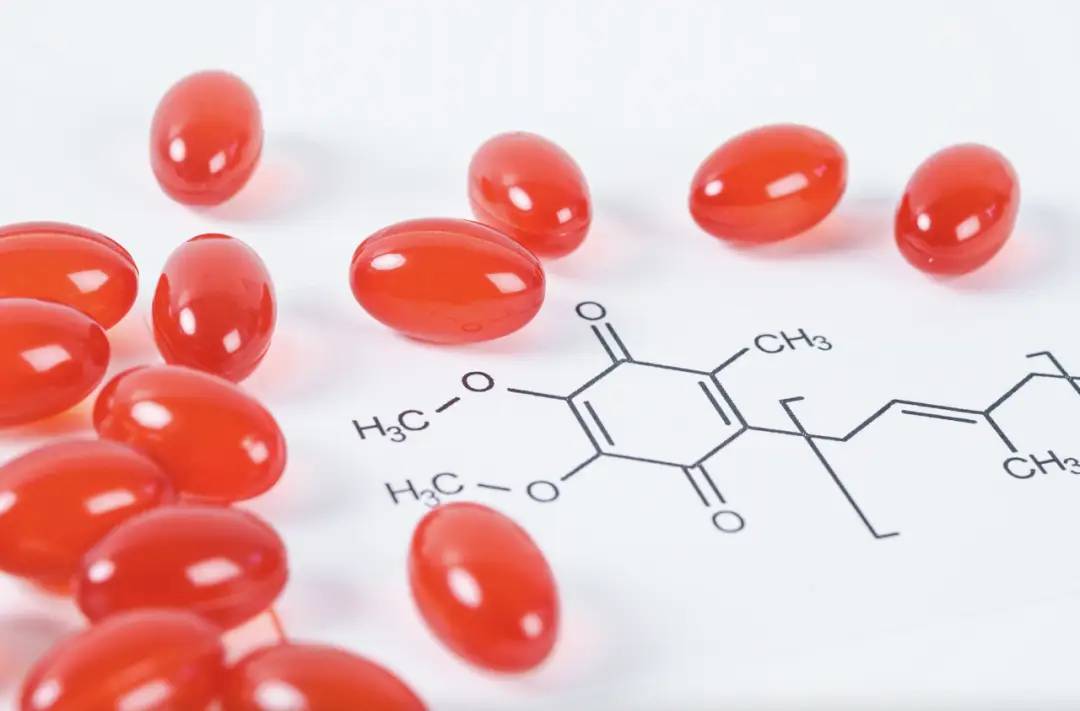How COQ10 used for Cardiovascular Disease?
Coenzyme Q10, also known as ubiquinone, was discovered in 1957, and its chemical structure was determined in 1958 by Dr. Caruforukas of the University of Texas, the father of Coenzyme Q10 research, for which he was awarded the Priestly Medal, the highest honor of the American Chemical Society [ 1-2].
Coenzyme Q10 is a fat-soluble quinone with a structure similar to that of vitamin K. It is named after the polymerization degree of the polyisopentenyl group of the side chain at the sixth position of the parent nucleus, which has a molecular weight of 863.36. It is readily decomposed by light. Coenzyme Q10 has a molecular weight of 863.36. It is easily decomposed by light, but less affected by temperature and humidity.

Coenzyme Q10 is a strong antioxidant. Coenzyme Q10 is one of the most important elements indispensable to human life and plays an important role in electron transfer in the respiratory chain of the threaded granule and the production of adenosine triphosphate. Coenzyme Q10 has been widely used in cardiovascular, neuromuscular, tumor immunity, diabetes and other diseases, and has been the subject of numerous studies.
It has been widely used in cardiovascular, neuromuscular, oncological and immunological diseases, diabetes and other diseases. It has been widely used as a nutraceutical and food additive in the United States, Europe and Japan more than 20 years ago, and has been emphasized in recent years in China, so we are now going to conduct a comprehensive and systematic review of the progress of the research on the application of CoQ10 in cardiovascular diseases in recent years.
1. Distribution,Absorption, And Metabolism of Coenzyme Q10 in the Human Body
Coenzyme Q10 is widely distributed in the human body, with large differences in content. The mass concentration is higher in tissues and organs such as the liver, heart, kidneys, and pancreas. The total content in the human body is 500 to 1,500 mg. The distribution in cells is as follows: 25% to 30% in the nucleus, 40% to 50% in the mitochondria, 15% to 20% in the microsomes, and 5% to 10% in the cytoplasm. In humans, the ability to synthesize coenzyme Q10 peaks at the age of 20 and remains stable until around the age of 50, gradually decreasing year by year. The decrease in coenzyme Q10 concentration is particularly pronounced in the heart, with the coenzyme Q10 content in the heart muscle of a 77-year-old person being more than 50% lower than that of a 20-year-old [2, 4].
The body's coenzyme Q10 is mainly synthesized and supplemented by diet. Coenzyme Q10 is relatively high in sardines, saury, animal offal (heart, liver, kidney), blackfish, beef, pork, peanuts, and other foods. The daily intake of coenzyme Q10 from a normal diet is 2 to 5 mg, which is far from meeting the body's needs under pathological conditions. Exogenous coenzyme Q10 is slowly absorbed through the small intestine and enters the lymphatic vessels, blood, and tissues.
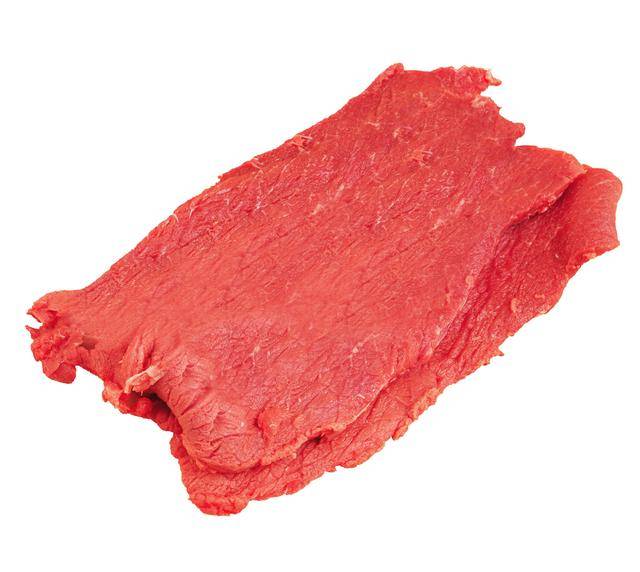
Studies have shown that the absorption and bioavailability of fat-soluble coenzyme Q10 are low, and individual differences are great. Age, gender, lipoprotein status, diet, dosage form, or other factors may affect its bioavailability. Male Wistar rats and rabbits were given 0.6 mg/kg of coenzyme Q10 orally at a time. The maximum blood drug concentration was reached 1 h and 2 h later, respectively. 6 mg/kg of coenzyme Q10 was given orally to male Wistar rats and rabbits once. The maximum blood drug concentration was reached 1 h and 2 h after administration, respectively. The drug concentration in tissues such as the heart, liver, and kidneys increased at 4 h. After administration, the drug was mainly excreted from the intestines via the liver and gallbladder (85% to 91%), with a very small amount excreted in the urine [4-5].
Different studies have reported that the normal plasma mass concentration of coenzyme Q10 in humans is 0.40 to 1.91 μmol/L (0.34 to 1.65 μg/mL). The human body needs at least seven vitamins to synthesize coenzyme Q10, including vitamin B2, niacin, vitamin B6, folic acid, vitamin B12, vitamin C, pantothenic acid, and several trace elements. It is a complex process involving at least 12 proteins and 17 biosynthetic reactions, which is susceptible to various factors such as genes, age, nutrition, drugs, etc. [2, 4, 6].
The endogenous level of coenzyme Q10 is regulated by physiological factors and is related to the body's oxidative activity. Its parent nucleus, the benzoquinone part, is synthesized in the body using tyrosine as a raw material, while the isoprene side chain is synthesized from acetyl coenzyme A raw materials via the methylmalonic acid pathway. Therefore, the use of β-blockers and statins, which are antihypertensive drugs that work by blocking the mevalonate pathway, also affects the synthesis of ubiquinone in the body and, in turn, the synthesis of coenzyme Q10 [4-5, 7]. Primary coenzyme Q10 deficiency is a genetic abnormality that causes a deficiency in the body's coenzyme Q10 synthesis and is clinically manifested by a series of fatal multisystem diseases including the heart, brain, and muscles [8].
2. The Mechanism of Coenzyme Q10 in Preventing Cardiovascular Disease
Coenzyme Q10 is a mandatory component of the respiratory chain in the mitochondria of all cells. It is a key cofactor in mitochondrial oxidative phosphorylation and a key component in the production of adenosine triphosphate. Studies have shown that coenzyme Q10 transfers electrons from complex 1 (NADH coenzyme Q reductase) to complex 3 (cytochrome complex bc1) and from complex 2 (succinate dehydrogenase) to complex 3 during mitochondrial electron transport [2-4].
Disturbances in the metabolism of myocardial energy substrates play a key role in the pathogenesis of heart failure. Coenzyme Q10 plays a key role in the biological functions of the heart muscle. It is the rate-limiting enzyme in the production of adenosine triphosphate in mitochondria and a key component of the electron transport chain [9].
Coenzyme Q10 is abundant in the heart muscle. Numerous studies have shown that a reduction or depletion of coenzyme Q10 in the heart muscle is an important mechanism in the development of clinical congestive heart failure. Some studies have even shown that the coenzyme Q10 content in the heart muscle is closely related to the degree and symptoms of heart failure. Therefore, some people call coenzyme Q10 a promoter and activator of energy metabolism in heart muscle cells [10].
Coenzyme Q10 has a direct antioxidant effect. In addition to mitochondria, it also plays an antioxidant role in lysosomes, Golgi vesicles, and plasma membranes by reacting directly with free radicals and promoting the reduction and regeneration of oxidized vitamins E and C. It can effectively prevent membrane phospholipid peroxidation and oxidative damage to mitochondrial DNA and membrane proteins caused by free radicals. Coenzyme Q10 can stabilize low-density lipoprotein (LDL) particles in circulation, prevent lipid peroxidation, and exert a beneficial effect on the cardiovascular system [11].

Research has found that oxidative stress has a significant impact on heart function. When the level of reactive oxygen species (ROS) rises, it reacts with numerous proteins, DNA, cell membranes, and other biomolecules, causing significant cell damage. The renin-angiotensin-aldosterone system plays an important role in the development of abnormal myocardial structure and function.
Increased production of ROS and angiotensin II induces c-jun amino terminal kinase and mitogen-activated protein kinase p38 signal regulatory kinase-1. In addition, increased oxidative stress products and cytokines directly stimulate the growth and hypertrophy of cardiomyocytes. Excessive myocardial fibrosis and reduced compliance are important causes of worsening heart failure. Severe oxidative stress can lead to perivascular and tissue fibrosis of the heart, hypertrophy of cardiomyocytes, and subsequently diastolic heart failure [4, 12].
Reduced coenzyme Q10 prevents the formation of lipid peroxide radicals by influencing the initiation process of lipid peroxidation. Lipid peroxidation is initiated and participated in by efficient continuous regeneration of lipids, which explains why coenzyme Q10 acts as an efficient antioxidant against free radicals in biological membranes [13].
Apoptosis caused by oxidative stress is an important factor in the development of heart failure, especially in the later stages. As oxidative stress increases, neuroendocrine and inflammatory responses are activated, causing cardiomyocytes to initiate a programmed death. Seven genes regulated by coenzyme Q10 are known to be involved in the apoptosis process [14].
Recent studies have shown that coenzyme Q10 can affect the expression of hundreds of genes, exert a variety of biological effects through the induction of gene transcription, and exert anti-inflammatory effects through nuclear factor-κB1-dependent gene expression; therefore, it can be used as an effective gene regulator [15].
Chronic heart failure is associated with chronic inflammation. Studies have found that the levels of circulating cytokines, soluble receptors, and soluble adhesion molecules are increased in patients with chronic heart failure. The chronically activated inflammatory response promotes the development of heart failure by activating the secretion of cytokines and chemokines by different cell types, leading to myocardial fibrosis and changes in the structural shape of the left ventricle. Recent studies have also confirmed that coenzyme Q10 has anti-inflammatory effects, and its mechanism may be related to down-regulating nitric oxide (NO) levels [16].
3. Clinical Application of Coenzyme Q10 in the Treatment of Cardiovascular Disease
3.1 Coenzyme Q10 and Heart Failure
Energy metabolism and mitochondrial biosynthesis disorders play an important role in myocardial dysfunction and the progression of heart failure. Basic experiments and clinical studies have shown that in animals and patients with acute and chronic heart failure, ROS production increases and myocardial mitochondrial function deteriorates sharply.
Numerous clinical studies have repeatedly demonstrated that patients with chronic heart failure have significantly lower levels of coenzyme Q10 in both the blood and the heart muscle. Heart failure is therefore a state in which chronic deterioration of the oxidative machinery leads to increased oxidative stress and an inability to maintain normal mitochondrial function. The antioxidant effect of coenzyme Q10 and its special position in the mitochondria make it possible for coenzyme Q10 to treat heart failure [2-4, 11, 17].
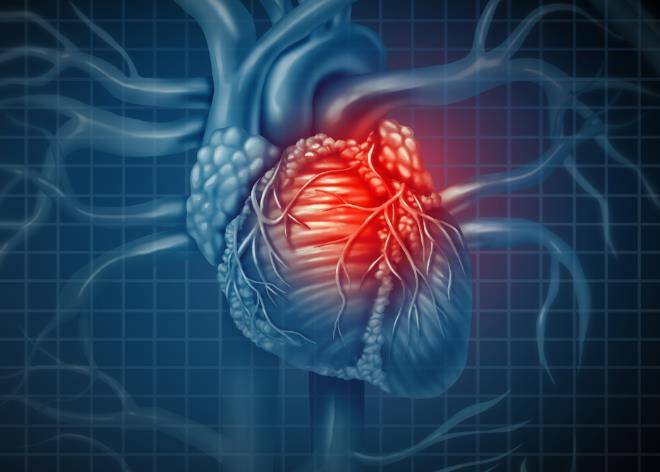
Over the past 20 years, there has been a wealth of clinical evidence for the effectiveness of coenzyme Q10 as a treatment for heart failure [1, 3-4]. The safety and clinical efficacy of coenzyme Q10 as an adjuvant treatment for chronic heart failure has been confirmed in several large multicentre (non-double-blind) studies. These studies have repeatedly demonstrated that coenzyme Q10 can effectively improve the clinical manifestations of cyanosis, edema, pulmonary rales, dyspnea, palpitations, fatigue, and arrhythmias in patients with chronic heart failure of varying degrees and from different causes, improve ejection fraction, and significantly improve the NYHA functional classification [18].
Baggio et al. [1] conducted a large open-label study that included 2,664 heart failure patients. This study was a randomized, placebo-controlled clinical trial that administered 150 mg of coenzyme Q10 daily for treatment. The study investigated the effect of coenzyme Q10 on the symptoms and signs of heart failure and the left ventricular ejection fraction in patients with chronic heart failure. The results showed that coenzyme Q10 had a significant effect and is recommended as an adjuvant treatment for chronic heart failure [19]. Table 1 summarizes the main clinical trials on coenzyme Q10 for chronic heart failure.
Table 1 Clinical Trials of Coenzyme Q10 for Chronic Heart Failure
Author | Time | Number | Q10 Dose | Research Type | Research Results |
Langsjoen | 1985 | 19 | 100 mg | Crossover | Increased ejection fraction |
Judy | 1986 | 14 | 100 mg | Parallel | Increased carbon monoxide and ejection fraction |
Poggesi | 1991 | 20 | 100 mg | Crossover | Increased ejection fraction |
Permanetter | 1992 | 25 | 100 mg | Parallel | No benefit |
Rengo | 1993 | 60 | 100 mg | Crossover | Increased ejection fraction |
Soja | 1997 | 356 | Meta | Significant improvement in stroke volume, cardiac output, and ejection fraction | |
Watson | 1999 | 30 | 100 mg | Crossover | The ejection fraction and stroke volume remain unchanged, while the left ventricular stroke volume and left ventricular diastolic volume decrease |
Munkholm | 1999 | 22 | 200 mg | RCT( Double Blind) | Improvement in stroke volume and exercise tolerance |
Khatta | 2000 | 55 | 200 mg | Parallel | Improved exercise tolerance, unchanged ejection fraction, increased oxygen consumption |
Keogh | 2003 | 39 | 150 mg | RCT( Double Blind) | Improvement of exercise tolerance |
Belardinelli | 2006 | 23 | 150 mg | double blind placebo crossover | Improvement of exercise tolerance |
Sander | 2006 | 227 | 150 mg | Systematic | Significant improvement in ejection fraction, stroke volume, and carbon monoxide levels |
Hosseini | 2008 | 50 | 150 mg | RCT | Increased ejection fraction |
Morisco | 1993 | 641 | 100 mg | RCT( Double Blind) | Significant reduction in hospitalization for chronic heart failure |
Morisco | 1994 | 6 | 2 mg/kg | Crossover | Improvement in ejection fraction, stroke volume, and carbon monoxide |
Baggio | 1994 | 2 664 | 100 mg | Italy Multi Center | Significant improvement in symptoms and signs of severe chronic heart failure |
Hofman-Bang | 1995 | 79 | 150 mg | Crossover | Increased ejection fraction |
Langsjoen | 2008 | 7 | 450 ~ 900 mg | Improvement in ejection fraction and NYHA grading | |
Fotino | 2013 | 395 | Meta | Significant improvement in ejection fraction and NYHA grading | |
Mortensen | 2014 | 420 | 300 mg | RCT | Symptom ejection fraction and NYHA grading improved, survival rate increased |
Preliminary results of the Q-SYMBIO study were presented at the 7th European Congress of Cardiology in 2013 [3, 20]. The most compelling evidence to date for the effectiveness of coenzyme Q10 as a treatment for heart failure was published in JACC in June 2014. The study was a randomized, double-blind, multicenter trial. The results showed that 420 heart failure patients given coenzyme Q10 100 mg three times a day had a better long-term treatment effect on heart failure symptoms and prognosis than those who received standard treatment with a placebo.
The Q-SYMBIO study showed that coenzyme Q10 significantly improved heart failure symptoms, heart function classification, and B-type brain natriuretic peptide compared to patients treated with standard therapy. heart failure symptoms, heart function classification, and B-type brain natriuretic peptide were significantly improved, while major adverse cardiovascular events including heart failure hospitalizations were significantly reduced by 43%, cardiovascular deaths were significantly reduced by 43%, deaths from any cause were significantly reduced by 42%, and adverse events were lower in the coenzyme Q10 group (13%/19%). Subgroup analysis showed that coenzyme Q10 was more effective in the elderly, men, patients with heart function class III (ejection fraction ≥30%), dilated cardiomyopathy, and amino-terminal brain natriuretic peptide precursors ≥300 pg/mL.
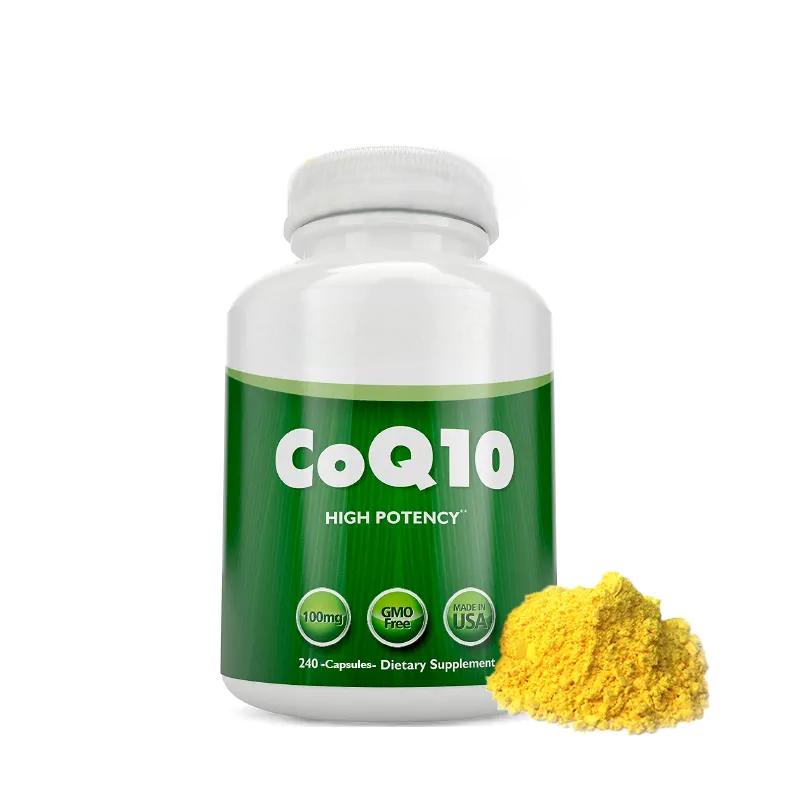
This study was a prospective study lasting more than ten years. Although the sample size was small, the design was meticulous and rigorous, and the conclusions were reliable. It will strongly promote the application of coenzyme Q10 in the treatment of heart failure. Experts from the ESC Heart Failure Forum pointed out that coenzyme Q10 is the first drug in the past decade, after angiotensin-converting enzyme inhibitors and beta blockers, to be proven to significantly improve the survival rate of chronic heart failure patients. It should be added to standard heart failure treatment [21]. Recently, some experts have pointed out that coenzyme Q10 supplementation is particularly useful in patients with heart failure in the late stages of the disease who are suffering from malnutrition and systemic failure [22].
3.2 Coenzyme Q10 and Hypertension
Oxidative stress plays an important role in all aspects of hypertension. Different causes will lead to a common result, that is, excessive production of ROS, which can induce and aggravate hypertension. In addition to the excessive production of ROS, reduced antioxidant capacity is also an important factor that promotes oxidative stress in hypertensive patients. It has been confirmed that the lower the coenzyme Q10 level in the elderly, the higher the prevalence of hypertension. Coenzyme Q10 reduces the production of mitochondrial superoxide by increasing the efficiency of electron transfer from complexes I and II. Coenzyme Q10 also exerts an antioxidant effect by scavenging free radicals and reducing lipid peroxidation at the level of the plasma membrane.
Nitric oxide (NO) plays an important role in the development and progression of hypertension and its complications. Reactive oxygen species (ROS) reduce the effect of NO by directly reacting with it to form nitrous peroxide through oxidative modification of low-density lipoprotein (oxidized low-density lipoprotein). Coenzyme Q10 can inhibit the down-regulation of endothelial nitric oxide synthase and up-regulation of inducible nitric oxide synthase mediated by oxidized low-density lipoprotein. Coenzyme Q10 reduces peripheral resistance by preserving NO. In some forms of hypertension, superoxide radical production increases, thereby reducing NO activity. Coenzyme Q10 can prevent the inactivation of NO by free radicals through its antioxidant effect [23].

Prostaglandin is an effective vasodilator. Coenzyme Q10 can promote the production of prostaglandin and prostaglandin and improve the sensitivity of arterial smooth muscle to prostaglandin.
Clinical trials have shown that some patients with elevated blood pressure may benefit from coenzyme Q10 adjuvant therapy. Burke et al. [24] found that 12 weeks of coenzyme Q10 treatment in a randomized double-blind placebo-controlled trial reduced systolic blood pressure in hypertensive patients. A non-evidence-based review [25] concluded that coenzyme Q10 can lower systolic blood pressure by up to 17 mm Hg (1 mm Hg = 0.133 3 kPa) and diastolic blood pressure by up to 10 mm Hg in hypertensive patients without significant adverse effects.
A recent double-blind randomized controlled study showed that treatment with coenzyme Q10 did not significantly affect blood pressure in obese subjects [26]. It is worth noting that in healthy animals or humans, coenzyme Q10 does not have direct vasodilatory or blood pressure lowering effects. This suggests that the blood pressure-lowering effect of coenzyme Q10 is specific to hypertensive patients with increased oxidative stress. A 2016 meta-analysis did not demonstrate a definite blood pressure-lowering effect of coenzyme Q10 [27].
3.3 Coenzyme Q10 and Atherosclerosis and Statin Therapy
Coenzyme Q10 reduces the rate of inactivation of NO and indirectly affects vascular function by inhibiting oxidative damage to LDC. Recently, coenzyme Q10 has also been shown to improve endothelial function in patients with coronary artery disease, heart failure, and diabetes. Coenzyme Q10 exerts anti-inflammatory and anti-angiogenic effects by affecting nuclear factor-κB and is involved in the prevention and treatment of atherosclerosis [28]. Flowers et al. [29] systematically reviewed the literature and pointed out that coenzyme Q10 may play an important role in primary cardiovascular prevention.
A recent systematic review and meta-analysis by Pirro et al. [30] showed that long-term consumption of nutritional supplements containing coenzyme Q10 has a beneficial effect on both blood sugar and lipid levels, significantly reducing total cholesterol (-0. 68 mmol/L, P < 0. 001), LDL cholesterol (-0. 62 mmol/L, P < 0. 001), triglycerides (-0. 16 mmol/L, P < 0. 001) and blood glucose (-0. 14 mmol/L, P = 0. 010), and elevated high-density lipoprotein cholesterol (0. 07 mmol/L, P < 0. 001). It has recently been reported that coenzyme Q10 300 mg given before percutaneous coronary intervention (PCI) does not reduce PCI-related myocardial infarction, but significantly reduces hypersensitive C-reactive protein levels [31]. It is well known that elevated lipoprotein a is an important risk factor for coronary heart disease, and it has been reported that coenzyme Q10 can reduce elevated lipoprotein [32].
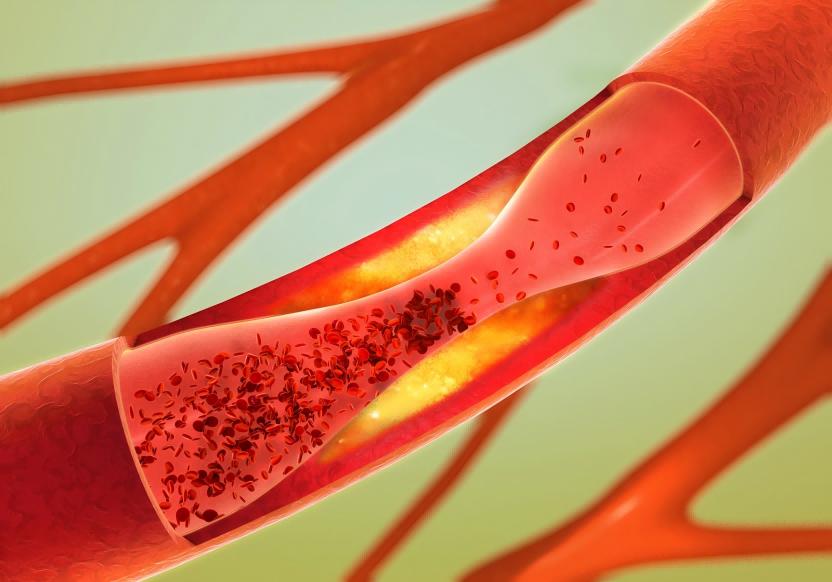
With the widespread use of statins, statin-associated myopathy has increased. Cholesterol and coenzyme Q10 are produced in the body through the same biochemical pathway, so statin treatment will, to some extent, lead to a decrease in coenzyme Q10 levels. Studies have shown that a decrease in coenzyme Q10 levels in muscle tissue will cause mitochondrial dysfunction, thereby increasing the risk of myopathy [33]. Coenzyme Q10 can reverse the adverse effects of statins, including statin-associated myopathy, by preventing the reduction in coenzyme Q10 caused by statins and reducing the production of low-density lipid oxidation products. However, recent articles have questioned the effect of coenzyme Q10 in improving statin myopathy, and further large-scale controlled studies with rigorous designs are expected.
3.4 Coenzyme Q10 Improves Symptoms of Cardiovascular Disease and Many Other Diseases
Due to its fundamental role in cellular metabolism, its powerful antioxidant effect, and its potential for gene regulation and modification, coenzyme Q10 is especially useful in elderly cardiovascular patients with neurogenic kidney and tumor lesions. Coenzyme Q10 is beneficial when combined with many neurodegenerative diseases such as Alzheimer's disease and Parkinson's disease. Diabetes is a major risk factor for cardiovascular disease, and there have been more recent reports that coenzyme Q10 is also very beneficial for diabetes [34].
Cardiovascular patients often feel more tired and their quality of life is reduced due to heart failure or the use of drugs such as beta blockers and statins. Many clinical studies have shown that routine coenzyme Q10 supplementation can improve this symptom and improve the quality of life. It has recently been reported that coenzyme Q10 is effective in the treatment of viral myocarditis, which is encouraging for doctors who use coenzyme Q10 to treat myocarditis [35].

Swedish scholars reported last year that in a ten-year follow-up observation of a group of 443 elderly patients with cardiovascular disease in a randomized double-blind placebo-controlled trial, after four years of combined supplementation with coenzyme Q10 and selenium, multifactor regression analysis showed that cardiovascular mortality in the treatment group decreased by 49% (HR 0.51, 95% CI 0.36–0.74, P = 0.0003), and the risk of ischemic heart disease also decreased by 49% (HR 0.51, 95% CI 0.27–0.74, P = 0.0003). 000 3), and the risk of ischemic heart disease also decreased by 49% (HR 0.51, 95% CI 0.27–0.97, P = 0.04).
This astonishing result has attracted widespread attention, and recently there have been some articles expressing great interest in the results of this study, which has shown a broader prospect for the clinical application of coenzyme Q10. 97, P = 0.04), this astonishing result has attracted widespread attention, and recently there have been many articles expressing keen interest in the research results, which has shown a broader prospect for the clinical application of coenzyme Q10 [36].
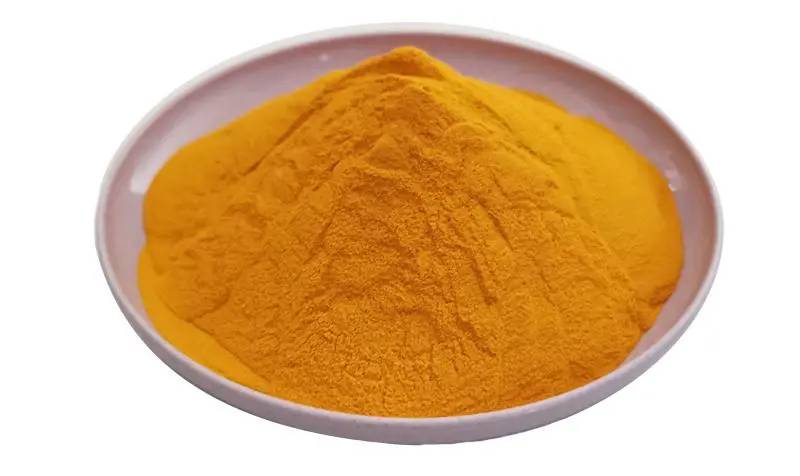
4. Conclusion
Over the past few years, clinical research and applications of coenzyme Q10 have made great progress. A large number of studies have shown that coenzyme Q10 is extremely important in both heart failure and vascular protection.
Reference:
[1] Baggio E , Gandini R , Plancher AC , et al . Italian multicenter study on the safety and efficacy of coenzyme Q10 as adjunctive therapy in heart failure . CoQ10 Drug Surveillance Investigators[ J] . Mol Aspects Med , 1994 , 15 Suppl :s287-s294 .
[2] Yang YK , Wang LP , Chen L , et al . Coenzyme Q10 treatment of cardiovascular disorders of ageing including heart failure , hypertension and endothelial dysfunc - tion[ J] . Clin Chim Acta , 2015 , 450 : 83-89 .
[3 ] Mortensen SA , Rosenfeldt F , Kumar A , et al . The effect of coenzyme Q10 on morbidity and mortality in chronic heart failure : results from Q-SYMBIO:a ran- domized double-blind trial[ J] . JACC Heart Fail , 2014 , 2(6) : 641-649 .
[4 ] Garrido-Maraver J , Cordero MD , Oropesa-Avila M , et al . Clinical applications of coenzyme Q10[ J] . Front Biosci , 2014 , 19 : 619-633 .
[5 ] Acosta MJ , Vazquez Fonseca L , Desbats MA , et al . Coenzyme Q biosynthesis in health and disease[ J] . Biochim Biophys Acta , 2016 , 1857 (8) : 1079-1085 .
[6] Niklowitz P , Onur S , Fischer A , et al . Coenzyme Q10 serum concentration and redox status in European adults: influence of age , sex , and lipoprotein concentra- tion[ J] . J Clin Biochem Nutr , 2016 , 58(3 ) : 240-245 .
[7 ] Berthold HK , Naini A , di Mauro S , et al . Effect of ezetimibe and /or simvastatin on coenzyme Q10 levels in plasma : a randomised trial [ J ] . Drug Saf , 2006 , 29 703-712 .
[8] Yubero D , Montero R , Armstrong J , et al . Molecular diagnosis of coenzyme Q10 deficiency[ J] . Expert Rev Mol Diagn , 2015 , 15 (8) : 1049-1059 .
[9] Bhagavan HN , Chopra RK . Potential role of ubiquinone ( coenzyme Q10) in pe - diatric cardiomyopathy[ J] . Clin Nutr , 2005 , 24 (3 ) : 331-338 .
[10 ] DiNicolantonio JJ , Bhutani J , McCarty MF , et al . Coenzyme Q10 for the treatment of heart failure : a review of the literature [ J ] . Open Heart , 2015 , 2:e000326 .
[11] Littarru GP , Tiano L . Bioenergetic and antioxidant properties of coenzyme Q10 : recent developments[ J] . Mol Biotechnol , 2007 , 37 (1) : 31-37 .
[12 ] Nakagami H , Takemoto M , Liao JK . NADPH oxidase-derived superoxide anion
mediates angiotensin Ⅱ-induced cardiac hypertrophy [ J ] . J Mol Cell Cardiol ,2003 , 35 (7 ) : 851-859 .
[13 ] Turunen M , Olsson J , Dallner G . Metabolism and function of coenzyme Q [ J ] . Biochim Biophys Acta , 2004 , 1660( 1-2) : 171-199 .
[14] Groneberg DA , Kindermann B , Althammer M , et al . Coenzyme Q10 affects ex- pression of genes involved in cell signalling , metabolism and transport in human CaCo-2 cells[ J] . Int J Biochem Cell Biol , 2005 , 37 (6) : 1208-1218 .
[15 ] Schmelzer C , Lindner I,Rimbach G , et al . Functions of coenzyme Q10 in inflam - mation and gene expression[ J] . Biofactors , 2008 , 32(1-4) : 179-183 .
[16] Zahed NS , Ghassami M , Nikbakht H . Effects of coenzyme Q10 supplementation on C-reactive protein and homocysteine as the inflammatory markers in hemodi - alysis patients ; a randomized clinical trial [ J ] . J Nephropathol , 2016 , 5 ( 1 ) : 38-43 .
[17 ] Molyneux SL , Florkowski CM , George PM , et al . Coenzyme Q10 : an independent predictor of mortality in chronic heart failure [ J] . J Am Coll Cardiol , 2008 , 52 : 1435-1441 .
[18] Fotino AD , Thompson-Paul AM , Bazzano LA . Effect of coenzyme Q 10 supple- mentation on heart failure : a meta -analysis[ J] . Am J Clin Nutr , 2013 , 97 ( 2 ) : 268-275 .
[19] Hosseini VN . Comparison of coenzyme Q10 versus placebo in chronic heart fail- ure[ J] . Res J Biol Sci , 2008 , 3 : 884-887 .
[20] Mortensen SA , Rosenfeldt F , Kumar A , et al . The effect of coenzyme Q10 on morbidity and mortality in chronic heart failure :results from Q-SYMBIO:a ran- domized double-blind trial[ J] . JACC Heart Fail , 2014 , 2(6) : 641-649 .
[21] Sharma A , Fonarow GC , Butler J , et al . Coenzyme Q10 and heart failure : a state - of-the -art review [ J] . Circ Heart Fail , 2016 , 9(4 ) :e002639 .
[22] Sciatti E , Lombardi C , Ravera A , et al . Nutritional deficiency in patients with heart failure[ J] . Nutrients , 2016 , 8 (7 ) . pii : E442 . doi : 10 . 3390/nu8070442 .
[23 ] Wyman M , Leonard M , Morledge T . Coenzyme Q10 : a therapy for hypertension and statin-induced myalgia? [ J] . Cleve Clin J Med , 2010 , 77 (7 ) : 435-442 .
[24] Burke BE , Neuenschwander R , Olson RD . Randomized , double-blind , placebo - controlled trial of coenzyme Q10 in isolated systolic hypertension[ J] . South Med J , 2001 , 94 (11) : 1112-1117 .
[25 ] Rosenfeldt FL , Haas SJ , Krum H , et al . Coenzyme Q10 in the treatment of hyper- tension : a meta -analysis of the clinical trials [ J ] . J Hum Hypertens , 2007 , 21 (4 ) : 297-306 .
[26] Lee YJ , Cho WJ , Kim JK , et al . Effects of coenzyme Q10 on arterial stiffness , metabolic parameters , and fatigue in obese subjects : a double-blind randomized controlled study[ J] . J Med Food , 2011 , 14 (4 ) : 386-390 .
[27 ] Ho MJ , Li EC , Wright JM . Blood pressure lowering efficacy of coenzyme Q10 for primary hypertension[ J] . Cochrane Database Syst Rev , 2016 , 3 : CD007435 .
[28] Kunitomo M , Yamaguchi Y , Kagota S , et al . Beneficial effect of coenzyme Q10 on increased oxidative and nitrative stress and inflammation and individual meta - bolic components developing in a rat model of metabolic syndrome [ J] . J Phar- macol Sci , 2008 , 107 (2) : 128-137 .
[29] Flowers N , Hartley L , Todkill D , et al . Coenzyme Q10 supplementation for the primary prevention of cardiovascular disease [ J] . Cochrane Database Syst Rev , 2014 , 12 : CD010405 .
[30] Pirro M , Mannarino MR , Bianconi V , et al . The effects of a nutraceutical combi - nation on plasma lipids and glucose : a systematic review and meta -analysis of randomized controlled trials[ J] . Pharmacol Res , 2016 , 110 : 76-88 .
[31] Aslanabadi N , Safaie N , Asgharzadeh Y , et al . The randomized clinical trial of coenzyme Q10 for the prevention of periprocedural myocardial injury following e - lective percutaneous coronary intervention [ J ] . Cardiovasc Ther , 2016 , 34 ( 4 ) : 254-260 .
[32] Sahebkar A , Simental-MendíaLE , Stefanutti C , et al . Supplementation with coen - zyme Q10 reduces plasma lipoprotein( a) concentrations but not other lipid indi - ces : a systematic review and meta -analysis [ J ] . Pharmacol Res , 2016 , 105 : 198-209 .
[33 ] Banach M , Serban C , Sahebkar A , et al . Effects of coenzyme Q10 on statin-in - duced myopathy : a meta -analysis of randomized controlled trials [ J] . Mayo Clin Proc , 2015 , 90(1) : 24-34 .
[34 ] Pirro M , Mannarino MR , Bianconi V , et al . The effects of a nutraceutical combi - nation on plasma lipids and glucose : a systematic review and meta -analysis of randomized controlled trials[ J] . Pharmacol Res , 2016 , 110 : 76-88 .
[35 ] Shao L , Ma A , Figtree G , et al . Combination therapy with coenzyme Q10 and tri-metazidine in patients with acute viral myocarditis[ J] . J Cardiovasc Pharmacol , 2016 , 68(2) : 150-154 .
[36] Alehagen U , Aaseth J , Johansson P . Reduced cardiovascular mortality 10 years after supplementation with selenium and coenzyme Q10 for four years : follow -up results of a prospective randomized double -blind placebo -controlled trial in eld - erly citizens[ J] . PLoS One , 2015 , 10(12) :e0141641 .


 English
English French
French Spanish
Spanish Russian
Russian Korean
Korean Japanese
Japanese